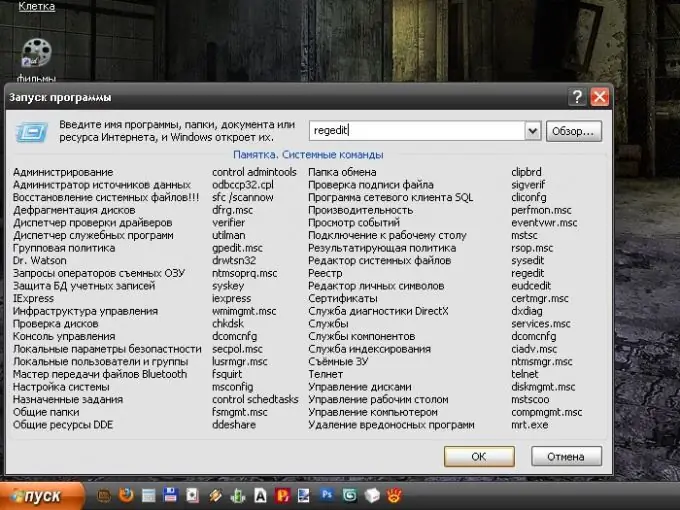In the Microsoft Windows operating system, configuration information is stored in a database called the registry. To find the registry and view the data that it contains (profiles of all computer users, information about the system hardware, settings for installed programs, etc.), you must run the registry editor program.

Instructions
Step 1
To start the Registry Editor program, open the Start menu and the Run command. In the "Open" field, enter regedit or regedit.exe without spaces, quotation marks, or other unnecessary printable characters and click OK in the window or press Enter on your keyboard. A new window will open in which you can view the data contained in the Windows registry.
Step 2
The registry can not only be viewed, but also modified, although users without special knowledge are not recommended to do this. Errors while editing the registry can seriously damage the operating system. If you do intend to make changes to the registry, back up all the data on your computer.
Step 3
There are a number of special commands for adding, modifying, and displaying registry key information on the screen. For example, the reg add command adds a new entry or new key to the registry, the reg compare command compares the specified keys or registry entries, and the reg copy command copies a registry entry to a specified directory on a local or remote computer.
Step 4
The registry itself has a tree structure. In the left part of the registry editor window, standard sections (folders) are displayed; in the right part, the user can see the parameters set for a specific system component (profile or hardware). All data in the registry is sorted.
Step 5
The HKEY_CURRENT_USER section contains data about the currently logged in user settings: control panel settings, user folders, screen colors. All of this data is collectively referred to as the user profile. Information about all user profiles for a computer is stored in the HKEY_USERS key. The HKEY_LOCAL_MACHINE section is responsible for the settings related to this computer and so on.
Step 6
If you have damaged your system by making incorrect changes to the Windows registry, you can try to fix it. Press the F8 key during the new boot of the computer and start the system with the last known good configuration by selecting the appropriate command from the list. This method is not universal - it all depends on what changes were made to the registry. Sometimes only a complete reinstallation of the operating system can help.






